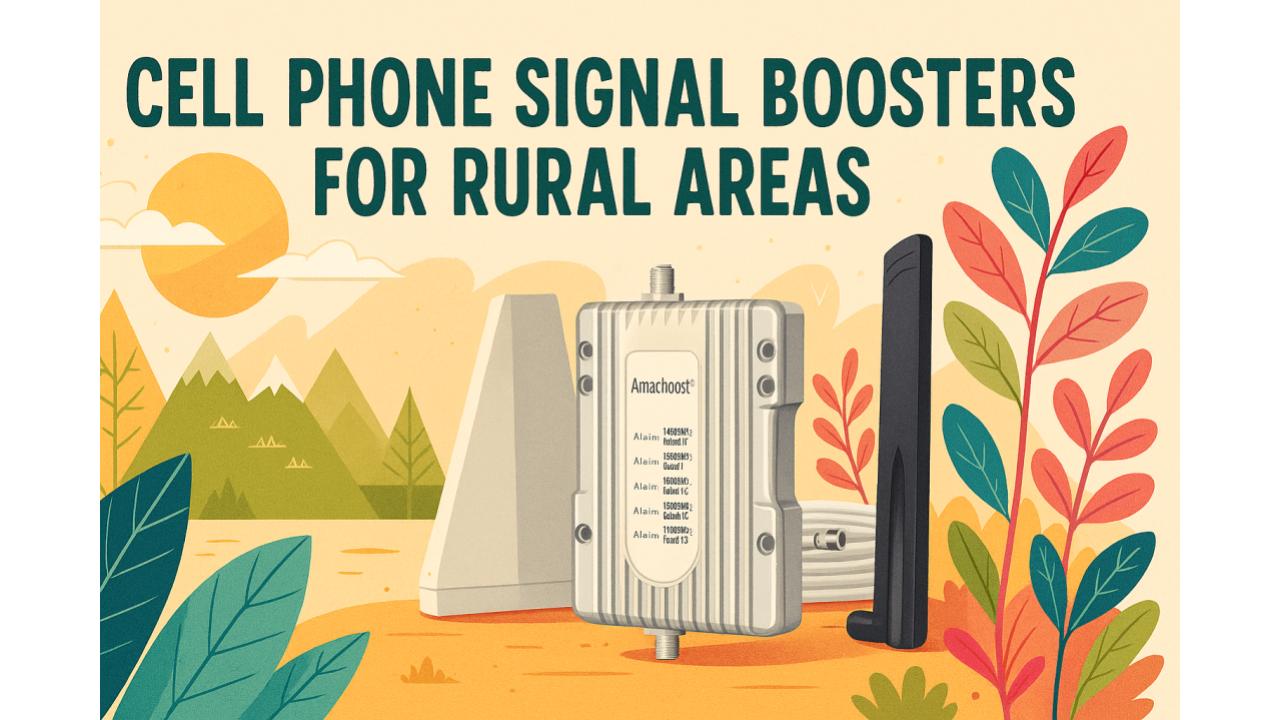Living in a rural area often means peace, quiet, and stunning views — but it can also mean poor or nonexistent cell signal. If you find yourself walking around your property just to get one bar, a cell phone booster may be the perfect solution.
In this guide, we’ll explain how cell phone boosters work, what features to look for, common pitfalls to avoid, and recommend some of the best models available for rural environments.
📡 What Is a Cell Phone Booster?
A cell phone booster, also known as a signal booster or repeater, is a device that improves mobile reception by amplifying weak signals. It consists of three components:
- Outdoor antenna – Captures the existing weak signal from the nearest tower
- Amplifier – Boosts the signal strength
- Indoor antenna – Rebroadcasts the improved signal inside your home, cabin, or vehicle
Boosters do not create signal — they can only amplify what’s already there.
✅ Features to Look for in Rural Cell Signal Boosters
🛰️ High Gain Outdoor Antenna
Rural areas typically receive weak signals. Look for directional Yagi antennas with high dBi gain (8–12 dBi) to focus on distant towers.
📶 Wide Frequency Band Support
Choose a booster that supports all major carriers and bands, including:
- Band 12 / 17 (AT&T, T-Mobile)
- Band 13 (Verizon)
- Band 5 / 4 / 66 (used by multiple carriers)
🔁 Large Coverage Area
For rural homes, you’ll want a booster that can cover 2,000 to 5,000+ sq ft or support multi-room setups.
🚗 Mobile Use
If you’re always on the move (in RVs or trucks), get a vehicle-specific booster with magnetic mount antennas and 12V DC support.
❌ Common Mistakes to Avoid
| Don’t Do This | Why It’s a Problem |
|---|---|
| Don’t install with zero signal | Boosters need some signal to amplify |
| Don’t use cheap, unapproved models | Poor performance and not FCC-certified |
| Don’t skip proper antenna aiming | Directional antennas must face the nearest tower |
| Don’t put indoor and outdoor antennas too close | Causes oscillation or feedback loop |
🛠️ Installation Tips
- Mount the outdoor antenna high — on a roof, pole, or tower
- Use an app like OpenSignal to locate your nearest cell tower
- Keep minimum 20 feet vertical separation between antennas
- Use low-loss coaxial cable for long runs (e.g., RG11 instead of RG6)
🏆 Best Cell Phone Boosters for Rural Areas
1. weBoost Home MultiRoom
- ✅ Carrier approved, FCC certified
- 🏠 Covers up to 5,000 sq ft
- 📡 Directional antenna, great for rural towers
- 🔧 Easy to install
- 💲 Mid-high price
2. SureCall Fusion4Home
- ✅ Excellent performance in weak signal areas
- 📶 Customizable indoor antenna options
- 💲 Affordable alternative to weBoost
3. HiBoost 10K Smart Link
- ✅ App for signal monitoring
- 📱 LCD screen for easier troubleshooting
- 📐 Covers large areas with strong gain
4. weBoost Drive Reach (for Vehicles)
- 🚙 Best-in-class for rural driving
- ✅ Magnetic roof antenna
- 🛣️ Ideal for trucks, RVs, and remote travel
📋 Do’s and Don’ts for Buying and Installing
✔️ DO:
- ✅ Confirm your location has some signal
- ✅ Choose a booster certified for your country (FCC in the U.S., IC in Canada)
- ✅ Use high-gain directional antennas for rural settings
- ✅ Read user reviews and check band compatibility
❌ DON’T:
- ❌ Assume more power always equals better results
- ❌ Mount antennas inside an attic if metal roofing is present
- ❌ Use splitters unless absolutely necessary (they reduce signal strength)
🧭 Final Thoughts
If you live in the country and struggle with dropped calls or slow data, a cell phone booster can make a huge difference. Just remember: they work best when properly installed and tuned to your unique location.
Whether you need reliable service in your farmhouse, barn, cabin, or while driving through the wilderness, investing in the right booster can give you strong, consistent signal — and peace of mind.
